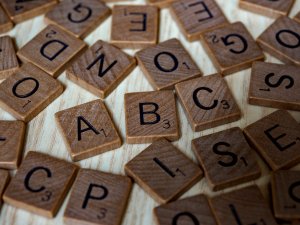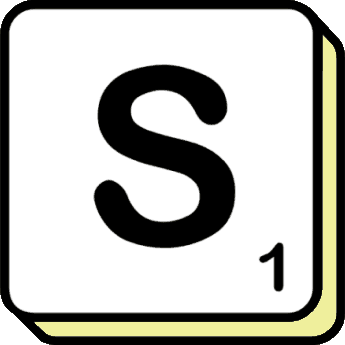Exploring Alliteration and Onomatopoeia
Author: Brian Bowman
Date Published: 28 July 2023
Language is a remarkable tool that allows us to communicate, express emotions, and paint vivid pictures with words. Within the realm of language, literary devices play a significant role in enhancing our writing and adding depth to our expressions. Two such devices that have captivated writers and readers alike for centuries are alliteration and onomatopoeia. In this article, we will delve into the fascinating world of these linguistic techniques, understanding their definitions, exploring their applications, and appreciating their impact on written and spoken language.

Alliteration Dancing with Words
Alliteration is a literary device that involves the repetition of consonant sounds at the beginning of neighboring words or stressed syllables within a phrase or sentence. It creates a musical quality, drawing attention to specific words and generating a rhythmic flow within the text. Writers and poets employ alliteration to enhance the aesthetic appeal of their work, create memorable phrases, and evoke certain emotions or images.
The Pleasure of Sound Onomatopoeia
Onomatopoeia is a linguistic phenomenon where words mimic the sounds they represent. In other words, it is the use of words that imitate or resemble the actual sound or action they describe. Onomatopoeic words infuse language with vividness and sensory experiences, allowing readers to hear, feel, and visualize the words on the page. From the buzzing of bees to the crashing of waves, onomatopoeia breathes life into written and spoken language.
Alliteration and Onomatopoeia in Literature
Both alliteration and onomatopoeia have played significant roles in literature throughout history. Writers employ these techniques to create engaging and memorable passages that resonate with readers. From the epic poems of ancient civilizations to modern novels, alliteration and onomatopoeia add richness, rhythm, and impact to the written word. Literary giants like William Shakespeare, Edgar Allan Poe, and Dr. Seuss have masterfully employed these devices to create timeless works that continue to captivate audiences.
Everyday Applications of Alliteration and Onomatopoeia
Beyond the realm of literature, alliteration and onomatopoeia find their way into everyday language, advertisements, and popular culture. Advertisers harness the power of alliteration to create catchy slogans and memorable brand names, while onomatopoeia adds an extra layer of realism and engagement in comics, cartoons, and advertising jingles. These devices are not limited to professional use and can be incorporated into everyday conversations, adding a touch of creativity and playfulness to our interactions.
The Creative Process Crafting Alliteration and Onomatopoeia
Creating alliterative phrases and onomatopoeic words is an enjoyable exercise in linguistic creativity. It requires a keen ear for sounds, an understanding of language, and a playful spirit. Experimenting with alliteration and onomatopoeia can be an enriching experience, allowing writers to explore the boundaries of language and challenge themselves to find unique and evocative combinations of sounds and meanings.
Alliteration and onomatopoeia are powerful linguistic tools that ignite our imagination, enhance our writing, and infuse language with musicality and vitality. From the pages of classic literature to the playful banter of everyday conversations, these devices enrich our linguistic experiences and leave lasting impressions on our minds. So, whether you're a poet, a writer, or simply an admirer of language, embrace the magic of alliteration and onomatopoeia, and let your words dance and sing.
Remember, the beauty of language lies in its versatility and the ability to captivate hearts and minds. Alliteration and onomatopoeia are just two examples of the countless ways we can harness the power of language to create memorable and engaging expressions. By incorporating these devices into our writing and speech, we can elevate our communication to new levels of creativity and impact.
Whether you're a poet seeking to craft lyrical verses, a storyteller aiming to immerse readers in a sensory experience, or a communicator looking to add flair to your message, alliteration and onomatopoeia offer a treasure trove of possibilities. Let's further explore some practical tips and examples for incorporating these devices into your writing and speech
Alliteration
Start with a subject or theme Select a central idea or concept that you want to highlight in your writing. This will serve as the foundation for your alliterative phrases.
Experiment with sounds Play around with words that share similar consonant sounds. Try different combinations and arrangements to find the most pleasing and impactful ones.
Vary the intensity Adjust the level of alliteration to suit your purpose. You can create subtle alliteration that subtly enhances the flow of your text or opt for more pronounced and attention-grabbing instances.
Maintain coherence While alliteration can be playful and whimsical, ensure that it doesn't overshadow the clarity and coherence of your writing. Strike a balance between artistic expression and effective communication.
Example "Silent as a whisper, the wind wandered through the willow trees."
Onomatopoeia
Identify the target sound Determine the specific sound or action you want to depict in your writing. It could be a natural sound, a human action, or any noise that adds a sensory element.
Use descriptive words Select words that closely resemble the sound you are trying to capture. Focus on the phonetics and try to convey the essence of the sound through language.
Incorporate context Ensure that the onomatopoeic words fit naturally within the context of your writing. They should enhance the imagery and contribute to the overall narrative or message.
Experiment with repetition Repeat the onomatopoeic word or phrase to create a rhythmic effect, emphasizing the sound and intensifying the sensory experience.
Example "The crackling fire warmed our bodies as its flames danced and popped."
In conclusion, alliteration and onomatopoeia offer us exciting avenues to explore the musicality and vividness of language. By integrating these devices into our writing and speech, we can engage readers, stimulate their senses, and leave a lasting impact. So, embrace the charm and versatility of alliteration and onomatopoeia, and let your words come alive with the power of sound.
Remember, language is a canvas awaiting your creative touch. Unleash your imagination, experiment with these linguistic devices, and let your words reverberate with the magic of alliteration and onomatopoeia.
